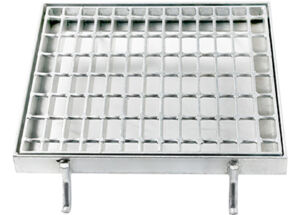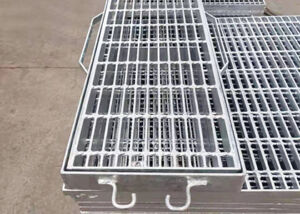Trench cover and road cover are both essential components in the construction and maintenance of roads and other infrastructure. They serve different purposes and are designed to withstand different levels of weight and traffic. In this article, we will compare the two types of covers and explore their differences in terms of design, material, and usage.
Firstly, let’s discuss trench covers. Trench covers are used to cover trenches or excavations in the ground. They are typically made of durable materials such as cast iron, steel, or composite materials. Trench covers are designed to bear heavy loads and provide a safe walking or driving surface over the trench. They are commonly used in urban areas where there is a lot of foot traffic and vehicular movement. Trench covers come in various shapes and sizes to fit different trench dimensions and load requirements.

On the other hand, road covers are used to cover utility holes, such as manholes, valve boxes, and electrical vaults, that are located within the roadway. Road covers are also made of strong materials like cast iron, steel, or concrete. However, they are specifically designed to withstand the weight of vehicular traffic and are often subjected to heavy loads from passing vehicles. Road covers are crucial for maintaining a smooth and safe road surface and preventing accidents or damage to underground utilities.
Another key difference between trench covers and road covers is their installation method. Trench covers are typically set into a frame and can be easily removed for maintenance or access to the trench below. They are often secured with bolts or locking systems to prevent unauthorized access. Road covers, on the other hand, are usually installed flush with the road surface and are designed to be load-bearing without the need for a separate frame. This difference in installation reflects the different purposes and load requirements of the two types of covers.
When it comes to material selection, both trench covers and road covers are available in various materials to suit different applications. Cast iron covers are known for their strength and durability, making them suitable for heavy-duty applications. Steel covers offer similar strength but are often lighter in weight, making them easier to handle during installation and maintenance. Composite materials are becoming increasingly popular due to their corrosion resistance and lighter weight, making them a versatile choice for both trench and road covers.

In terms of usage, trench covers are primarily used in pedestrian areas such as sidewalks, parks, and plazas, as well as in industrial settings where there are trenches or service channels in the ground. They provide a safe and stable surface for pedestrians and vehicles to traverse while protecting the trench from debris and damage. Road covers, on the other hand, are exclusively used in roadways to cover access points to underground utilities. They play a critical role in maintaining the integrity of the road surface and ensuring the safety of motorists and pedestrians.
In conclusion, trench covers and road covers are two distinct types of covers that serve different purposes in the construction and maintenance of infrastructure. While trench covers are designed for pedestrian areas and industrial settings with trenches, road covers are specifically intended for use in roadways to cover utility access points. Understanding the differences between these two types of covers is essential for selecting the right cover for a specific application and ensuring the safety and functionality of the infrastructure.

